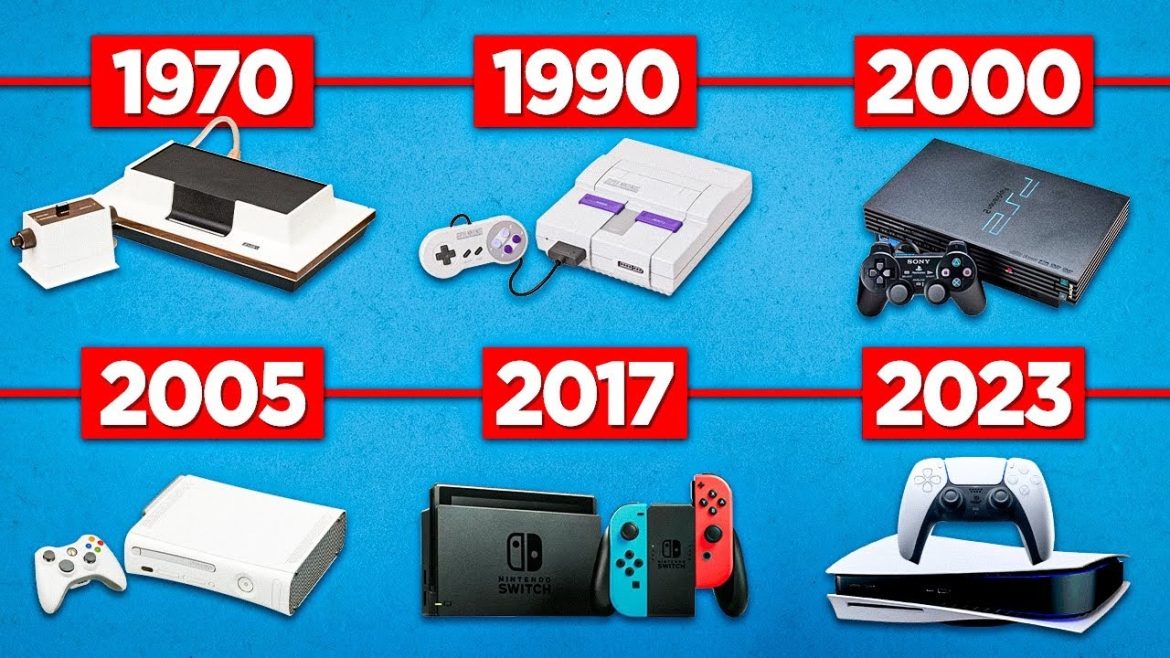Gaming consoles have come a long way since their inception, evolving from simple 8-bit machines to powerful multimedia devices capable of delivering stunning graphics and immersive gameplay experiences. In this article, we’ll take a journey through the history of gaming consoles, exploring their evolution from retro classics to the next-generation powerhouses shaping the future of gaming.
The Early Years: Pioneering Consoles and Iconic Games
The history of gaming consoles dates back to the 1970s, with the release of iconic systems like the Atari 2600 and the Magnavox Odyssey. These early consoles introduced players to classic games like Pong, Space Invaders, and Pac-Man, laying the foundation for the gaming industry as we know it today. Despite their primitive graphics and limited capabilities, these pioneering consoles captivated audiences and sparked a cultural phenomenon that continues to thrive to this day.
As technology advanced, so too did gaming consoles, with each new generation pushing the boundaries of what was possible in terms of graphics, sound, and gameplay. The introduction of 16-bit consoles like the Super Nintendo Entertainment System (SNES) and the Sega Genesis ushered in an era of colorful sprites and richly detailed worlds, while the transition to 3D graphics with consoles like the Sony PlayStation and the Nintendo 64 opened up new possibilities for immersive gaming experiences.
The Modern Era: HD Graphics, Online Gaming, and Multimedia Integration
In the early 2000s, gaming consoles underwent a major transformation with the release of the PlayStation 2, Xbox, and Nintendo GameCube. These consoles introduced players to the world of high-definition graphics, online multiplayer gaming, and multimedia integration, paving the way for the modern era of gaming. Titles like Halo, Grand Theft Auto: San Andreas, and The Legend of Zelda: The Wind Waker became instant classics, showcasing the potential of gaming consoles as multimedia entertainment devices.
The PlayStation 3, Xbox 360, and Nintendo Wii further pushed the boundaries of gaming technology, introducing features like motion controls, HD video streaming, and digital distribution platforms like PlayStation Network and Xbox Live. These consoles not only expanded the gaming audience but also transformed the way we consume entertainment, blurring the lines between gaming, movies, and television.
Next-Gen Powerhouses: The Future of Gaming Consoles
With the release of the PlayStation 4, Xbox One, and Nintendo Switch, gaming consoles entered the next generation of gaming, offering unprecedented levels of performance, graphics fidelity, and gameplay innovation. These consoles introduced features like 4K resolution, virtual reality support, and cloud gaming, bringing gaming experiences to new heights of immersion and realism.
The upcoming PlayStation 5 and Xbox Series X|S promise to push the boundaries even further, with features like ray tracing, high refresh rates, and lightning-fast SSD storage that promise to deliver unparalleled gaming experiences. With advancements in technology like artificial intelligence, machine learning, and augmented reality on the horizon, the future of gaming consoles looks brighter than ever, offering endless possibilities for innovation and creativity.
Conclusion
In conclusion, the evolution of gaming consoles has been nothing short of remarkable, with each new generation pushing the boundaries of technology and transforming the gaming landscape. From the humble beginnings of 8-bit classics to the next-generation powerhouses shaping the future of gaming, gaming consoles have captivated audiences and inspired generations of gamers around the world. As we look to the future, the possibilities for gaming consoles are limitless, promising even more immersive, interactive, and unforgettable gaming experiences for players of all ages. So, whether you’re a retro enthusiast or a next-gen gamer, the evolution of gaming consoles offers something for everyone to enjoy.



